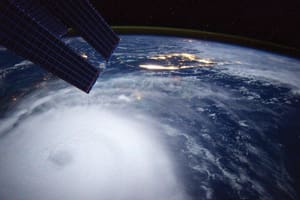The National Transportation Safety Board is urging other federal agencies to improve hurricane forecast accuracy following several high-profile forecast errors in recent years.
The agency issued 10 safety recommendations last month that emerged during the ongoing probe into the El Faro merchant ship sinking. Foremost is the request that the National Oceanic and Atmospheric Administration (NOAA) develop new hurricane prediction models and new technology to sift through various scenarios.
But, the NTSB also urged the National Weather Service to make storm forecast updates issued in between the standard advisories more available to mariners. Currently, these so-called intermediate advisories are not transmitted to certain satellite services — including the one used aboard El Faro.
Twenty-eight American sailors and five Polish technicians died when El Faro sank on Oct. 1, 2015, in the North Atlantic Ocean roughly 40 miles northeast of Crooked Island. The NTSB expects to complete its investigation and release its findings later this year. It issued these initial findings to allow agencies a head start in implementing the reforms.
“Storm avoidance is a life-saving skill at sea,” NTSB Acting Chairman Robert L. Sumwalt said in a statement. “And having frequent, up-to-date and reliable weather information is key to effective storm avoidance — and to saving lives.”
The 790-foot El Faro, operated by a Tote Maritime subsidiary, departed Jacksonville, Fla., for San Juan, Puerto Rico, before 2300 on Sept. 29. Around that time, the National Hurricane Center issued a forecast for Hurricane Joaquin. It suggested that by Oct. 1 the slow-moving storm would be within 45 miles of San Salvador Island in the Bahamas.
Joaquin’s trajectory did not follow that original projection. At 0800 on Oct. 1, roughly 20 minutes after El Faro likely sank, the storm was 104 miles south of that initial position. Its winds were 35 knots higher than initially predicted. Early forecasts for Hurricane Matthew and Tropical Storm Julia in 2016 and Tropical Storm Erika in 2015 also proved inaccurate, the NTSB report said.
The report urged NOAA to improve predictions for tropical cyclones such as Julia and Erika, which had characteristics making their movements harder to forecast. It also called for better forecast models.
NOAA spokesman Chris Vaccaro acknowledged the agency has work to do.
“We appreciate NTSB’s analysis and recommendations,” he said in an email. “In particular, we agree with the need for better forecast tools to improve our understanding of how tropical cyclones respond to moderate levels of wind shear, a particularly challenging forecast scenario.”

